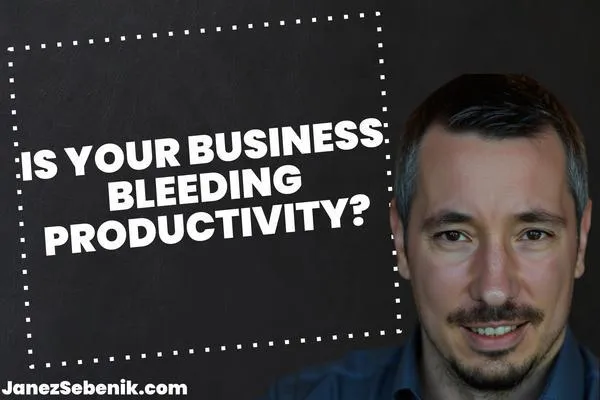
What is productive efficiency in simple terms?
Imagine you're running a business. You want to make the most stuff possible without wasting anything. That's productive efficiency in a nutshell.
Productive efficiency happens when you're using all your resources in the best way to make as much as you can. It's like squeezing every last drop out of your lemonade.
You might think this is just for big companies, but it's not. You can use this idea in your daily life too. It's about getting the most bang for your buck, whether you're making widgets or planning your day.
Key Takeaways
Productive efficiency maximizes output while minimizing waste
It applies to businesses, economies, and even personal tasks
Achieving it requires smart resource use and constant improvement
Understanding Productive Efficiency
Productive efficiency is all about getting the most bang for your buck. It's about squeezing every ounce of value from your resources without wasting a thing.
Defining Productive Efficiency
Productive efficiency happens when you're making stuff at the lowest possible cost. It's like being a master chef who can whip up a gourmet meal with just a few ingredients.
You're hitting peak efficiency when you can't make more of one thing without making less of another. That's when you're on the production possibility frontier.
It's not just about churning out more stuff. It's about being smart with what you've got.
Key Principles of Efficiency
First up, you gotta minimize waste. Every scrap counts.
Next, you need to use your resources in the best way possible. It's like fitting puzzle pieces together perfectly.
You also want to keep an eye on your production methods. Always be on the lookout for better ways to do things.
Lastly, you need to balance quality and quantity. No point making a ton of junk, right?
Productive vs Allocative Efficiency
Now, don't get these two mixed up. They're like cousins - related, but different.
Productive efficiency is about making things at the lowest cost. It's the "how" of production.
Allocative efficiency is about making the right things. It's the "what" of production.
You could be super efficient at making flip phones, but if nobody wants them, you're missing the mark.
The Role of Opportunity Cost
Opportunity cost is always lurking in the shadows of efficiency. It's what you give up to get something else.
When you're aiming for productive efficiency, you're always making trade-offs. More of this means less of that.
It's like choosing between pizza and tacos. If you pick pizza, you miss out on tacos. That's your opportunity cost.
Understanding this helps you make smarter choices about what to produce and how to produce it.
Measuring Efficiency
Measuring efficiency is all about numbers. You'll want to know these key concepts to really understand how businesses maximize their output. Let's dive in.
Production Possibility Frontier (PPF)
The PPF is like your max potential. It's a curve that shows the most stuff you can make with what you've got.
Picture this: you're making pizzas and burgers. The PPF shows all the combos you can make without wasting anything. If you're on that curve, you're producing efficiently.
But here's the kicker - if you're inside the curve, you're slacking. Outside? That's fantasy land. You can't do more than your max.
Marginal Cost and Efficiency
Marginal cost is all about the next unit. How much does it cost to make one more thing?
When you're super efficient, your marginal cost matches the price. That's the sweet spot. You're not leaving money on the table, but you're not losing cash either.
Think of it like this: if making one more burger costs you $5, but you can sell it for $6, you're golden. Keep making burgers until that cost hits $6. Then stop.
Average Total Cost Curve
This curve is your financial roadmap. It shows how much each product costs you on average as you make more.
At first, your costs drop as you make more stuff. That's because you're spreading out your fixed costs. But there's a turning point.
After a while, costs start creeping up again. Maybe you need more managers or your equipment can't keep up. That U-shaped curve? It's your efficiency guide.
The bottom of the U is your efficiency paradise. You're making the most stuff at the lowest average cost. That's where you want to be.
Factors Impacting Productive Efficiency
Want to boost your productive efficiency? Let's dive into the key players: labor and tech. These two heavy hitters can make or break your efficiency game.
Labor and Productivity
Your workforce is the backbone of productive efficiency. It's all about getting the most bang for your buck with the people you've got.
Skilled workers? They're worth their weight in gold. They pump out more goods and services in less time. That's efficiency on steroids.
Training is your secret weapon. Invest in your team's skills, and watch productivity soar. It's like giving them superpowers.
Motivation matters too. Happy workers are productive workers. Throw in some incentives, and watch them crush those efficiency goals.
Don't forget about teamwork. When your crew clicks, productive efficiency skyrockets. It's like a well-oiled machine, but with people.
Technological Advancements
Tech is your efficiency superhero. It's constantly changing the game, making things faster, cheaper, and better.
Automation? It's a game-changer. Machines can work 24/7 without breaks. They don't get tired, they don't make mistakes. That's efficiency on autopilot.
New production methods are like finding a shortcut. They help you make more stuff with less effort. It's like magic, but it's just smart tech.
Don't sleep on software. The right programs can streamline your processes, cutting out waste and boosting output. It's like giving your business a brain upgrade.
Remember, staying on top of tech trends is crucial. The latest innovations can give you an edge, helping you produce at the lowest possible cost. It's like having a crystal ball for efficiency.
Economic Structures and Efficiency
Different market structures affect how efficiently resources are used. Let's break down how competition and monopolies shape economic efficiency.
Perfect Competition and Efficiency
In perfect competition, efficiency is king. You've got lots of small firms selling the same stuff. No one controls the market. Prices? Set by supply and demand.
Here's the kicker: firms can't jack up prices. If they do, customers bounce. This pressure keeps everyone on their toes. Firms have to be productive and efficient to stay in the game.
The result? Resources get used wisely. Waste? Minimal. Prices? Fair. It's like economic nirvana.
Monopolies' Impact on Efficiency
Now, monopolies are a whole different ballgame. One big player calls all the shots. No competition means they can slack off.
Without rivals breathing down their neck, monopolies get lazy. They might not bother improving products. Or cutting costs. Why should they? Customers have nowhere else to go.
This leads to what economists call "X-inefficiency." Fancy term for wasted resources. Prices go up, quality goes down. Not great for you, the consumer.
Monopolistic and Competitive Markets
Real life? It's usually somewhere in between. You've got monopolistic competition. Think clothing brands or restaurants.
Each business has its own twist. They're not identical, but they're similar enough to compete. This setup can be pretty efficient.
You get some variety. Businesses still need to watch their costs. And they've got to keep innovating to stand out.
The competitive advantage here? It comes from being unique while staying efficient. It's a balancing act that can drive progress and keep prices in check.
Striving for Productive Efficiency
Want to make the most of what you've got? That's what productive efficiency is all about. It's like squeezing every last drop out of your resources. Let's dive into how you can make it happen.
Resource Allocation and Production
You know that feeling when you're juggling too many balls? That's what businesses face daily. But here's the secret sauce: smart resource allocation. It's about putting the right stuff in the right place at the right time.
Think of it like this: You've got a pizza shop. You don't want five people making dough and nobody at the oven, right? That's wasted potential.
Efficient production means using your ingredients, equipment, and people in the best way possible. No waste, no slack. Just smooth sailing.
The Quest for Economies of Scale
Ever wonder why big companies seem to have it easier? It's all about economies of scale, baby. The bigger you get, the cheaper it gets to make each item.
Imagine you're making cupcakes. If you make 10, it costs you $2 each. But if you make 1000? That might drop to $1 each. That's the power of scale.
Productive efficiency loves economies of scale. It's like getting more bang for your buck. You're cranking out more stuff without cranking up the costs.
Maximizing Output with Scarce Resources
Let's face it, we all want more. More money, more time, more everything. But here's the kicker: resources are limited. So how do you get the most out of what you've got?
It's all about being clever. You've got to squeeze every ounce of value from your resources. Think of it like packing for a trip in a tiny suitcase. You've got to be smart about what goes in.
Maximizing output means finding ways to produce more with less. It's about working smarter, not harder. Use technology, train your team, and always look for better ways to do things.
Remember, waste is your enemy. Every resource counts. So make 'em count!
Real-World Implications
Productive efficiency impacts your everyday life more than you might think. It shapes how schools educate kids and how countries manage their resources.
Education and Economic Growth
You've probably noticed some schools seem to do more with less. That's productive efficiency in action. When schools use their resources well, they produce better educational outcomes. This means smarter kids and a stronger workforce.
Better education leads to more innovation. More innovation means economic growth. It's a cycle that keeps on giving.
But it's not just about throwing money at schools. It's about using what you've got in the smartest way possible. Think lean and mean, not fat and lazy.
Trade-Offs in Resource Distribution
Here's the thing: you can't have it all. When you're talking about productive efficiency, you're always making trade-offs.
You've got a limited pile of stuff to work with. How do you split it up? Do you put more into healthcare or education? Roads or renewable energy?
It's like trying to decide between pizza toppings when you're on a budget. You can't have everything, so you've gotta choose wisely.
The key is finding that sweet spot. You want to use your resources in a way that gives you the biggest bang for your buck. No waste, all gains.
Study Guides and Resources
Want to ace your econ exam? You need the right tools.
Start with the production possibilities curve (PPC). It's your secret weapon for understanding productive efficiency.
Picture a graph showing pizza vs. burgers. That curve? It's your PPC. It shows the max output you can get with your resources.
Cool, right?
But wait, there's more! Resource utilization is key. It's about squeezing every drop of value from what you've got.
Think of it like getting the most juice from an orange.
Pro tip: Look for study guides that break down these concepts. They'll help you visualize the PPC and resource use. Find ones with practice problems. The more you practice, the better you'll get.
Remember, productive efficiency isn't just for textbooks. It's a real-world skill. Master it, and you'll be the efficiency king (or queen) in no time!
